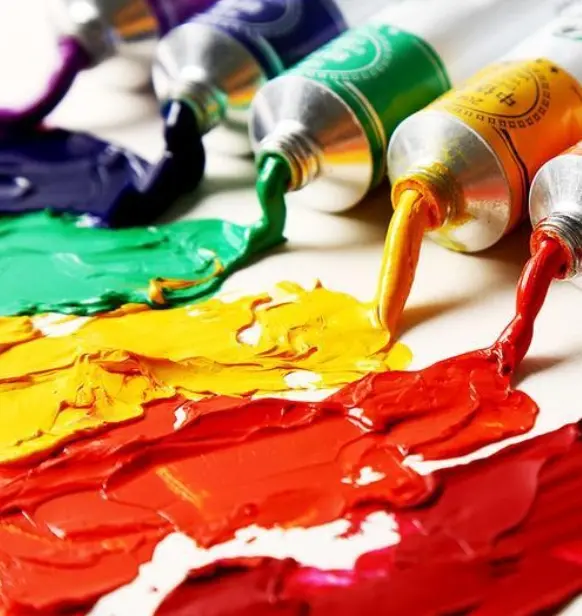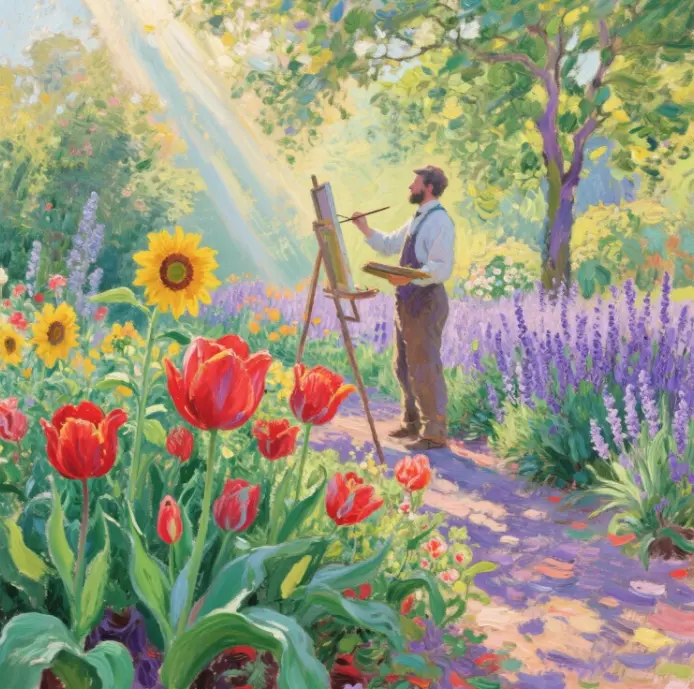When creating an oil portrait, understanding how to oil paint is more than just mastering the technique of oil painting, it’s also about accurately capturing the character’s demeanor, emotion, and structure. The beauty of portraiture lies in its ability to reveal an individual’s unique temperament and inner emotions, which requires the artist to accomplish step-by-step through a series of methodical steps. In this article, we will introduce you to how to create an oil portrait through four key steps, from composition to detailing, to help you create expressive works.

Setting the Composition
Every oil portrait begins with a precise composition. First, draw the basic outline of the head, making sure that the dynamic relationship and structural articulation of the head, neck and shoulders are natural and smooth. When drawing the outline of the head, the artist maintains the principle of looking at the whole body and observes it in detail through the method of “contrast”. Through comparison, it is possible to accurately capture the silhouette of the figure, especially the general shape of the head and the characteristics of the five senses. At this point, in addition to capturing the shape of the head, we should also focus on the structural relationship of the five senses, especially the connection between the neck and the shoulders.

Lay out the general color relationship
After determining the composition, the next step is to deal with the color relationship. Before you start painting, you can draw a small color draft and repeatedly adjust the position of the colors to determine the color layout of the picture. This will not only help to understand the relationship between colors, but will also help the artist to be more focused when working on a large scale. At this stage, we recommend laying out large blocks of color quickly and boldly, avoiding too much attention to detail, and ensuring that the overall color tone and atmosphere is initially established.

In-depth painting
Once the color relationships have been established, the next task is to delve into the details. The process of shaping the three-dimensionality and layering of a character through color requires a detailed portrayal of the features and facial expressions, especially the eyes, eyebrows, and mouth, which are the main points of transmission of expression, and the most expressive and varied parts of the body. One of the challenges of portraiture is to capture the emotional changes of a character, so when portraying in depth, the artist needs to mull over, observe and compare, gradually portraying the details more realistically and vividly. Each brushstroke should be closely related to the character’s demeanor and emotions, and the detailed depiction makes the painting more lifelike.

Adjustment and Unification
After completing the depiction of composition, color and details, the next step is the final adjustment and unification of the work. At this stage, the artist needs to withdraw from the local details of the depiction, review the impression and overall feeling when he first saw the model, and combine the contrast and reality of each part to make the expression of the character’s demeanor more coordinated and unified. In the process of adjustment, pay attention to the transition of color and the articulation of light and dark to ensure the overall harmony of the picture. The final unification and adjustment is actually the cultivation and enhancement of the artist’s overall artistic taste, as well as the key to ensure that the emotional transmission of the work can be accurately expressed.
how to oil paint Portrait creation is a complex and challenging task, from composition to detail shaping, each step requires the artist’s patience and careful observation. Through reasonable composition, coloring, detailing and final adjustment, the artist is able to create an expressive and emotional oil portrait. This is not only a demonstration of skill, but also the process of the artist’s deep understanding of the figure and the conveyance of emotion. If you can master these four key steps, your oil portrait work will definitely be more vivid, realistic and have the power to move people’s hearts.




